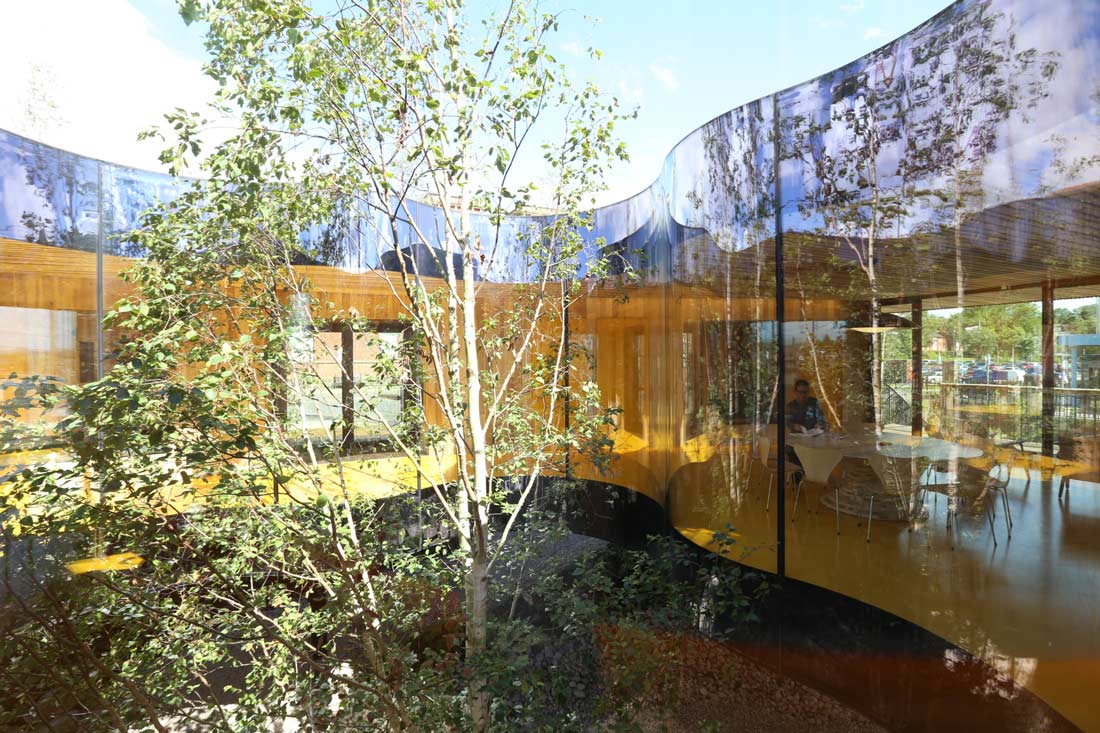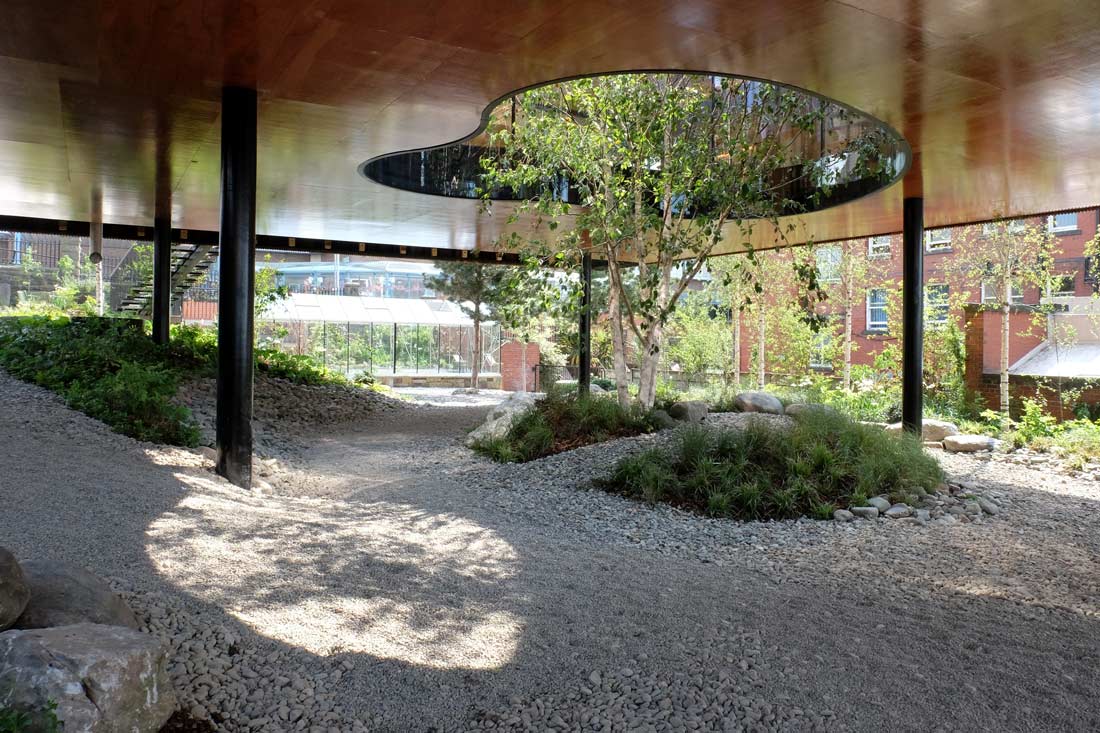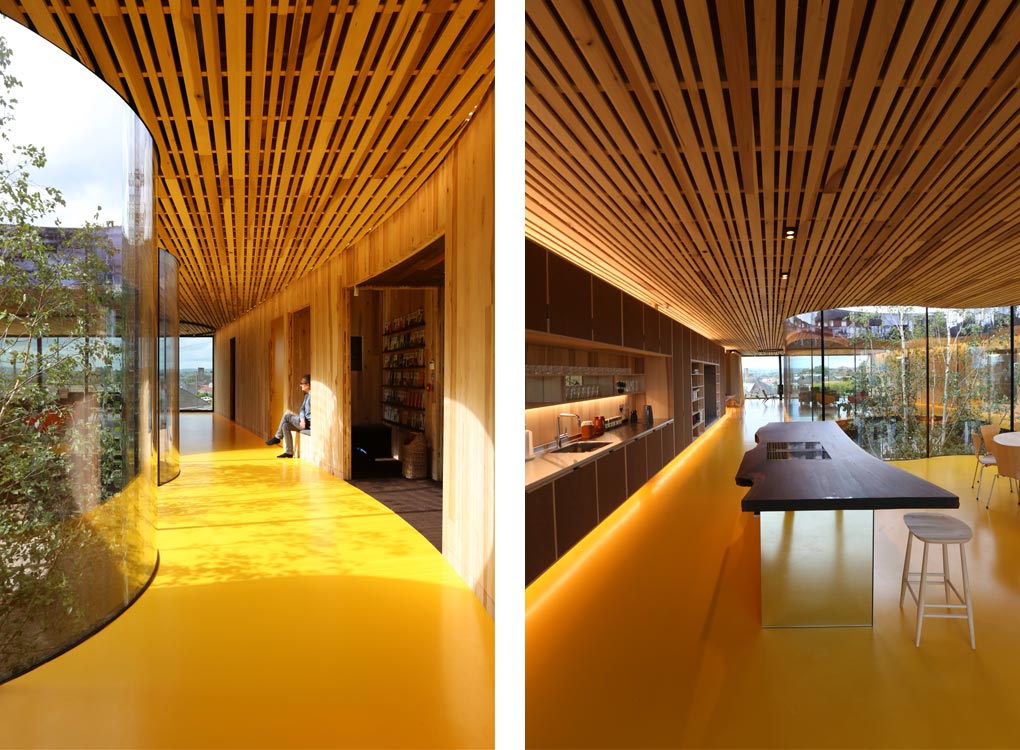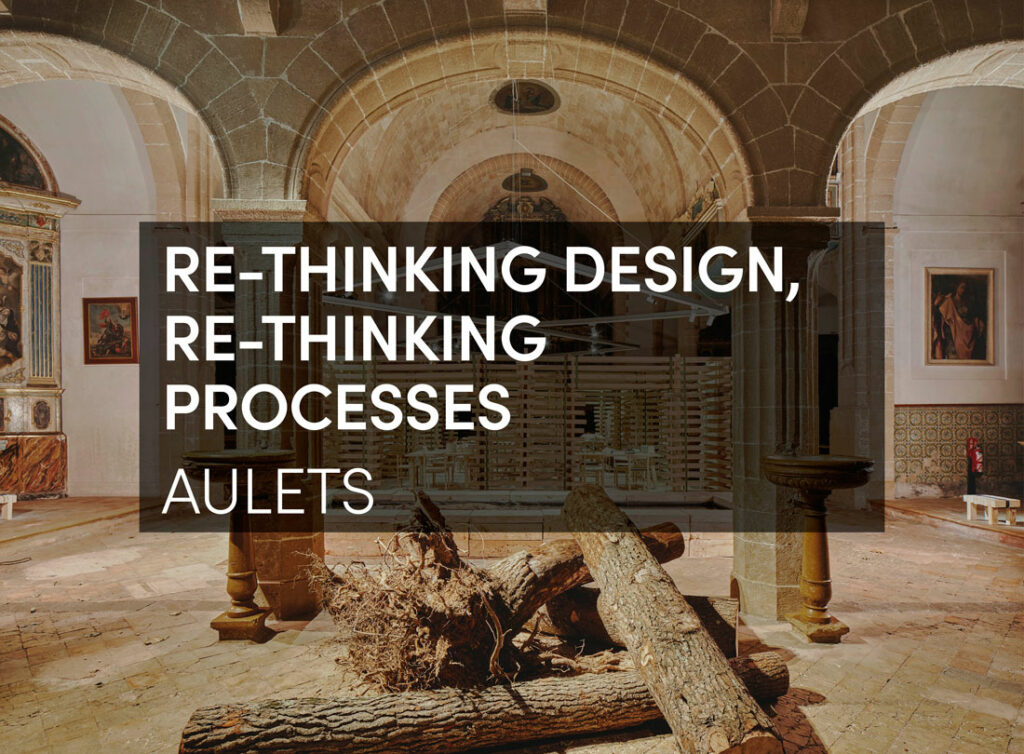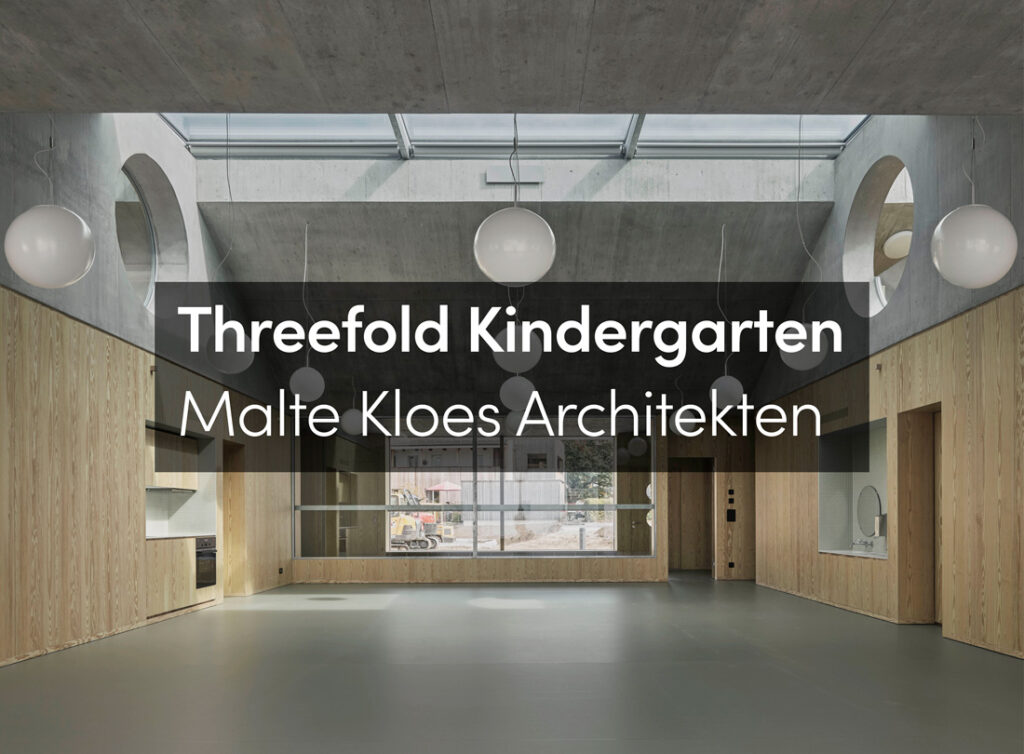In addition to the central programme of providing free practical, emotional and social support, Maggie’s buildings variously serve as oasis, message bearer and inspiration but have not explicitly addressed the relation between the built environment and causes of cancer. One of the unanswered questions cancer sufferers ask is, ‘What caused it?’ The increasing evidence of cancer in developed countries points toward carcinogenic elements in our food, drink and air, and in material components of our built environment.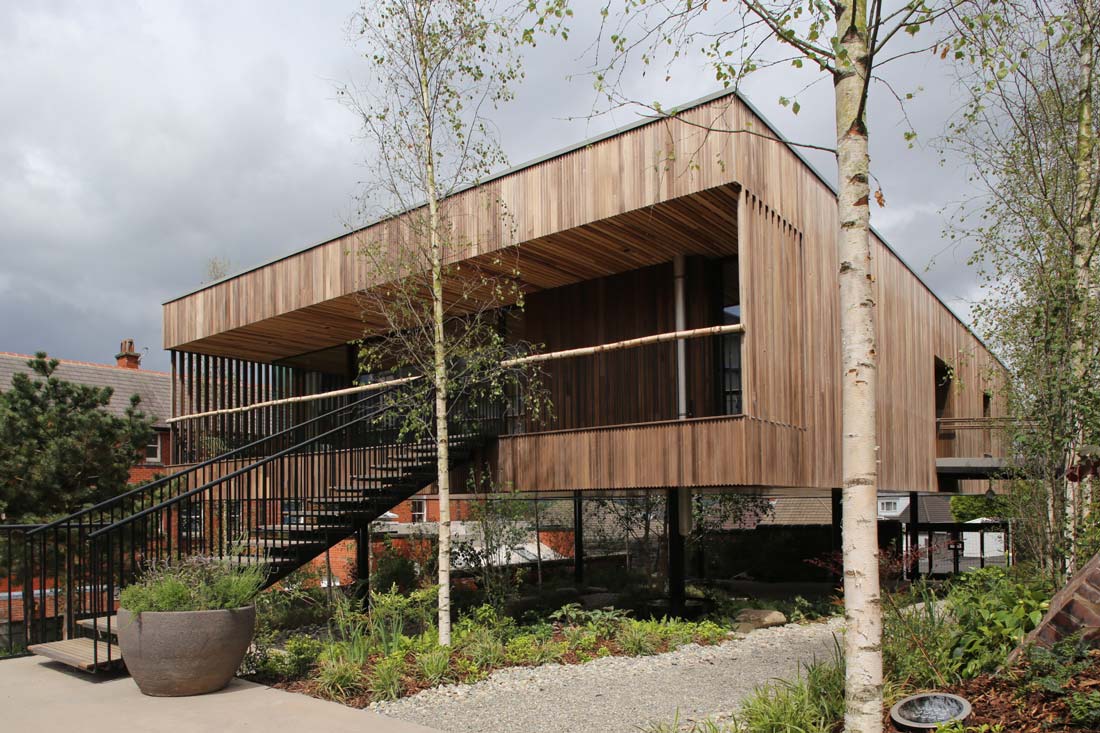
dRMM are an architecture practice immersed in the orchestration of materials and the built environment, and how design makes people live and feel differently. Our pioneering work in timber construction included the UK’s first cross-laminated timber public buildings at Kingsdale School, London (2006-2009) and a succession of well-known projects ever since. When the Maggie’s project started I was Dean of Architecture at the Royal College of Art, but still actively building and promoting timber architecture with dRMM – mostly housing and education buildings. I was honoured to accept such an interesting commission from an enlightened client.
The building design is deliberately less about form and more about content. A well-made, carefully proportioned, simple box of surprises. Nature and daylight and the view of the ground below and sky above (the strong presence of outside) have been brought into the interior in an unexpectedly powerful way; a large asymmetrical hole through which a tree grows marks the centre with an absence. The building hovers over a new tree garden; the resulting inside/out ‘tree house’ typology and shelter that is created questions our removed relationship to nature and simultaneously embraces the human contradiction of needing to be inside but preferring to be outside.
Why wood? In wood there is hope, humanity, scale, warmth and nature’s clever plan to absorb carbon. Wood is a non-toxic, versatile, benign, anti-carcinogenic material. People like wood, but steel and concrete are the industry default. Having pioneering engineered timber construction since 2000, I was delighted to be able to invent and develop cross-laminated hardwood through dRMM’s collaboration with AHEC and ARUP for Endless Stair in 2013. A key new material which outperformed existing cross-laminated timber was the result. For Maggie’s Oldham, dRMM re-present this new material in an integrated design for a public building, carrying a message for cancer care and for environmentally sophisticated architecture. In a didactic display of engineered timber and glass construction, all of the walls and roof are visibly structured and form an exquisite natural finish internally. Externally the building is draped in corrugated, heat-treated wood, like a surreal theatrical curtain. Inside and out, whether structure, furniture or thermally-modified cladding, the timber used is American tulipwood: a prolific fast-growing deciduous Magnolia tree made noble here by skilful manipulation. Maggie’s Oldham is the first cross-laminated hardwood building in the world.
But the use of wood at Maggie’s is just part of a bigger design intention to reverse the norms of hospital architecture, where clinical institutionalised environments and management procedures can make patients feel dispirited and disempowered. Cancer patients feel desperate and therefore hand over control of their lives too easily to medical processes. Their time is precious, yet huge amounts are wasted waiting hours in hospitals, on steel and plastic furniture in rooms without daylight, contemplating vending machines and mortality. Maggie’s centres invert this experience, turning a painful time into a pleasure.
Maggie’s offer of comfort, humanity and empathy is carefully judged. Visitors may have just had devastating news, be needing advice, be in remission helping others, be waiting for a clinic, be attending a class, be a carer needing rest, or a family recently bereaved. Staff are recruited to assess visitors’ needs skilfully but do not wear ID badges – nor do the Maggie’s centres have door signage, only open doors.
Just as people have to talk, so must the building communicate in order to comfort, reward curiosity, inform and empower the user. dRMM took a great deal of advice from Maggie’s and people dealing with cancer. Lucy Steed-Fassett, a close friend living and dying with cancer, also helped me think about the general and the particular: from the psychological effect of specific spaces and views, to the effect of light levels and colour on skin made sensitive from radiotherapy, right down to the details of wood not metal door handles to avoid the neuropathy of fingers made painful by chemotherapy.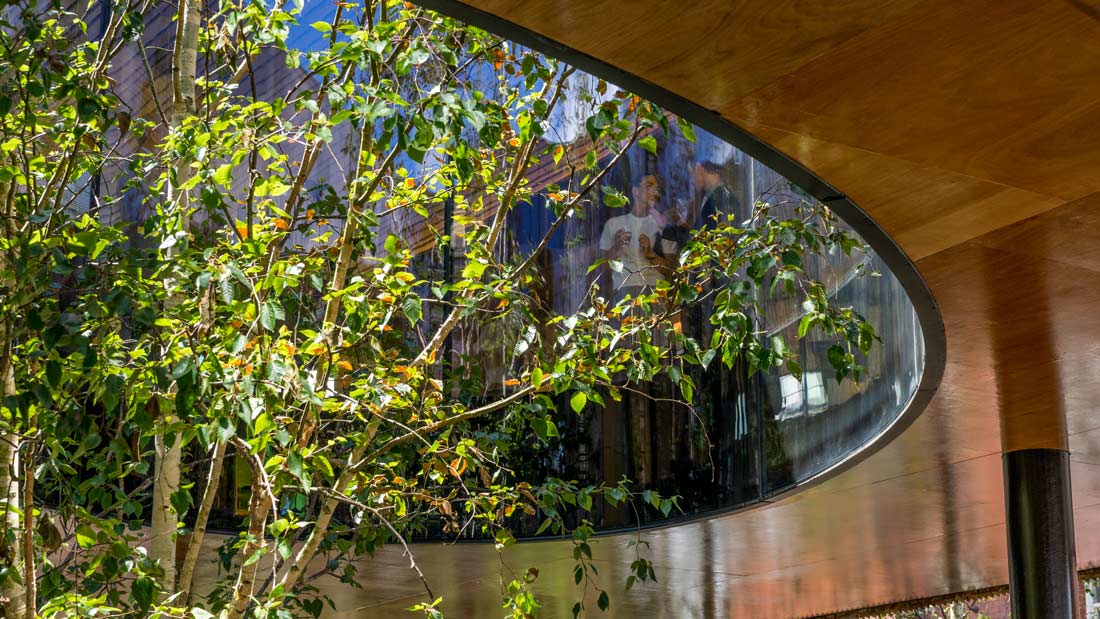
One of the important questions asked by the client has focused on the need for, and means of, creating privacy. The plan is spectacularly open, framing views of the garden to the south, the horizon to the north and the sky above. This main space is served by a suite of small rooms on one side and seating niches, but the occasional need for larger subdivision has resulted in what I like to call useful art. Dutch artist Petra Blaisse has designed a full-height reversible curtain loop which creates an intimate free-form enclosure, redefining space, light, colour, acoustics and privacy levels.
The client, design team and contractors have worked hard and collaborated well, from building to landscape to furniture. The outcome is a holistic design environment, where the shadowy foliage of the trees in a framed view is as deliberate as the comfortable height, fabric and colour of your chair, or the home-grown tomatoes for the soup on the central circular tulipwood table. Maggie’s Oldham is a carefully made manifesto for the architecture of health. Cancer deprives people of certainty; Maggie’s gives them care and consideration.
The project was made possible by the generosity of the Stoller Charitable Trust, the ingenuity of engineers Booth King (structure) and Atelier Ten (services), the tenacity of cost consultant Robert Lombardelli Partnership and the practicality and care of main contractor Parkinson.
Thanks are due to AHEC, Züblin and Benchmark for timber expertise, Jinny Blom and Rupert Muldoon for helping in dRMM’s first landscape design, Petra and Peter of Inside/Outside for the special curtain. The dedicated project team at dRMM were Jasmin Sohi assisted by Tom Etchells. My part in leading the overall design is dedicated to Lucy Steed-Fassett, whose positivity, insight and dignity have inspired me.
Prof. Alex de Rijke. Founding Director, dRMM Architects
